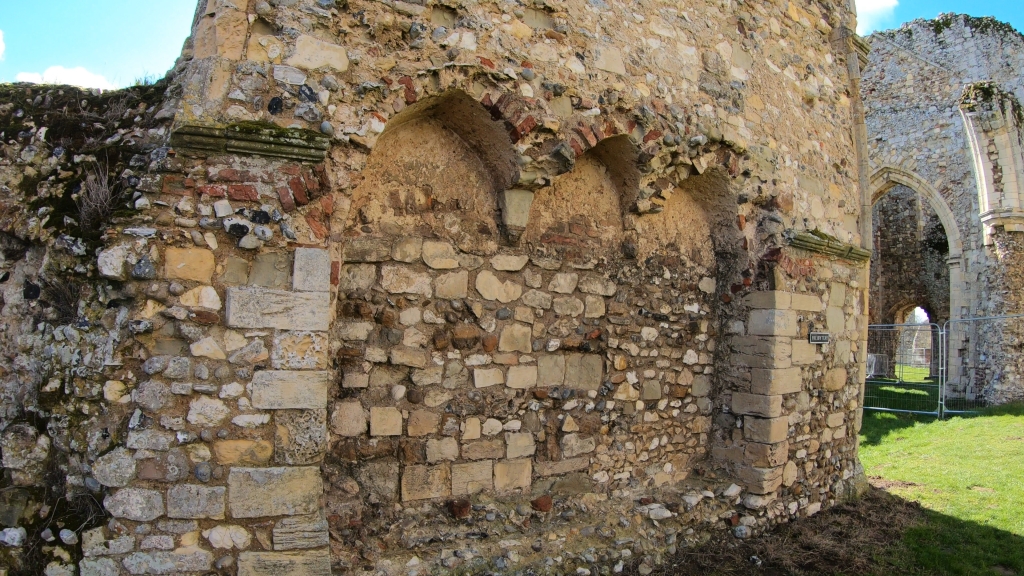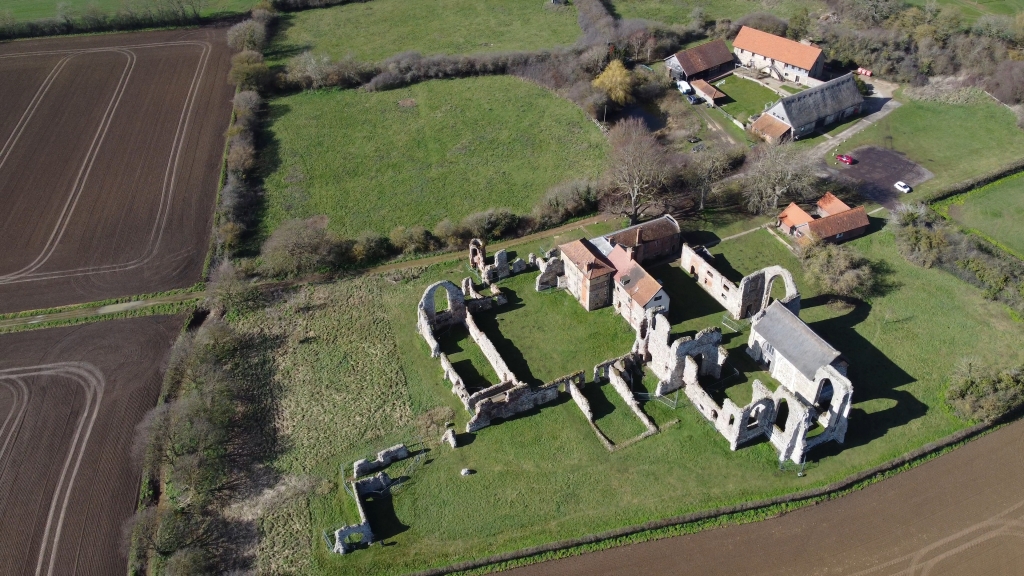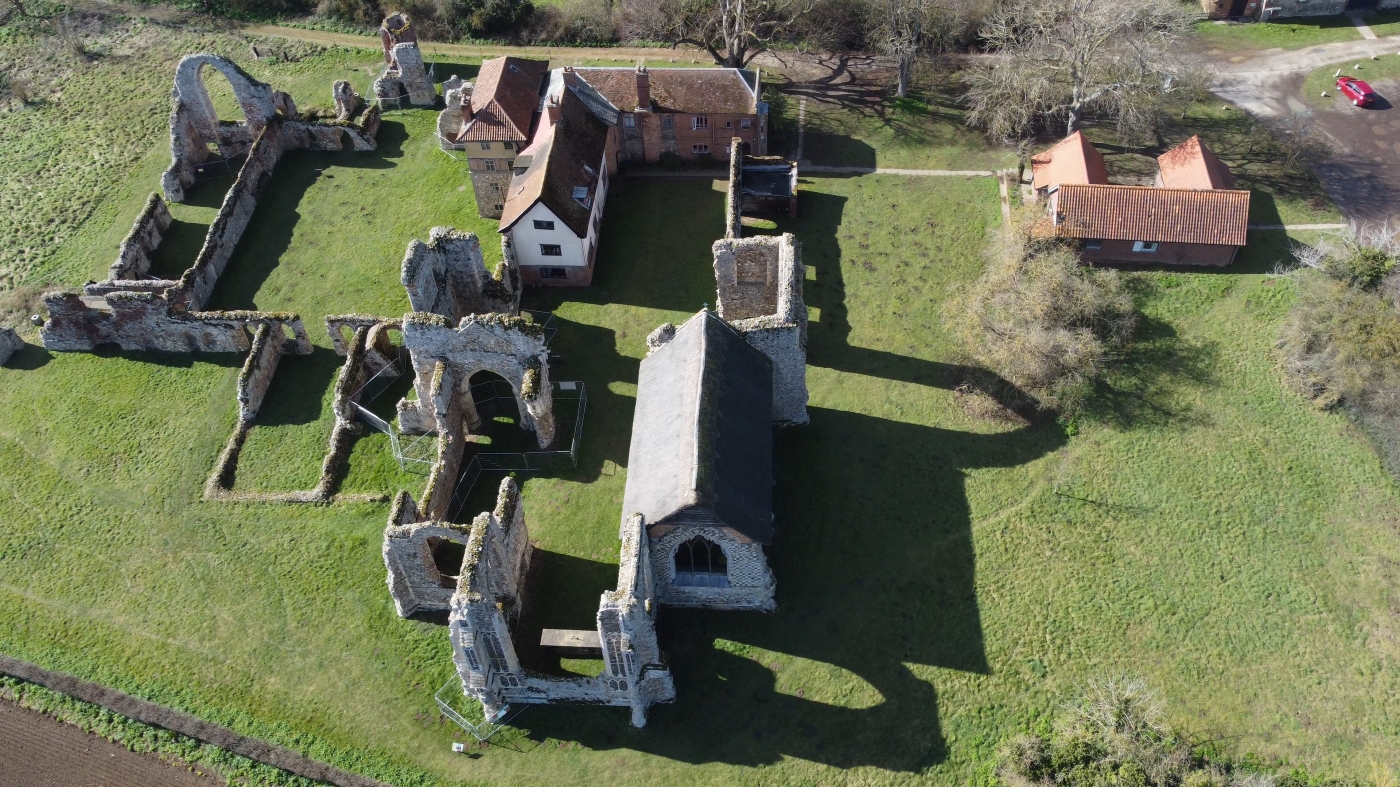Our next destination in Suffolk is towards an impressive set of remains of a 14th century Premonstratensian abbey. Known as one of the best preserved monastic sites left in Suffolk and another set of historic, hidden remains that are waiting to be rediscovered, with tales of a demonic black dog. Join us as we wander the remains of Leiston Abbey.
The abbey belonged to the Premonstratensians, a reformed Order of white-habited canons that were founded by St. Norbert in northern France. The order were very strict and much preferred isolated locations like Minsmere, which was kept well away from the town. The site was founded in 1182 and built by Ranulf de Glanville, who was part of Henry II’s Chief Justice. But with the site built on a marshland at Minsmere, it was often very flooded and eventually the canons were forced to move their community further inland to the current site we walk around of Leiston, stone by stone in around 1363 under the instructions and orders from the Earl of Suffolk, Robert de Ufford.
The people who lived and worked here wore black and white robes and were ordained priests unlike the monks of other religious orders. The canons here as part of their order did not have to have their heads shaved, and were allowed to sport beards. Sadly after completion of the abbey it burned down and the canons painstakingly rebuilt it again. The canons were able to upcycle much of its original materials but incorporated new functional and stylistic elements that were needed to keep up with the architectural trends, many of these trends are still visible when walking the abbey site. The 14th century outside walls were finished with fine chequer work, whilst the windows have an intricate tracery patterns.

The whole of Leiston abbey was classed as an area of increased importance so they maintained that it would have had tightly controlled access, the inner prescient was the heart of domestic and spiritual life, some of the buildings were used for prayers and worship whilst other areas used for book keeping, washing, resting, storage and eating. Interestingly several of key buildings that would have once been of greatest importance to the abbeys functions are still missing and yet to be discovered, including that of the gatehouse. The gatehouse would have been very important, because It would have controlled all incoming and outgoing access and the infirmary, which was a place that cared for the lay brothers, the canons and the community and the all-important kitchens.

When overlooking the abbey church, like many other abbeys, it’s the main building that is always relentlessly decorated, looked after and more or less the most beautiful building on site. The church was built in the form of a cross with two chapels on either side of the chancel which was the area just in front of the altar. The lady chapel as it’s known is on the left of here, it would have been roofed and occasionally used for services. We luckily get the chance to head inside and see around this small beautiful and intimate chapel room and is often still in use nowadays for worship or music recitals, it’s a beautiful place to have a look around in.

The stone that was used to build the church and the abbey would have been reused and repurposed from the earlier abbey at Minsmere just 3 miles south from here. Incredibly some of the ornamental stone capitals which are between the columns and the arches were re used and re-carved nearly 200 years after they were first placed at Minsmere. It’s quite common for buildings in east Anglia to have stone taken from one building to another, but it was very rare and unusual for the stone not to be re-carved to fit in with the current trend of the day. I love the chequer board design on the back of the chapel, and as you walk the eastern wall you can see the remains of the decorative panels built from flint in a stone framing, I love the look of the large windows that would have once been filled with beautiful stained glass, as well as seeing the size of the east window just how large the abbey would have been back in its heyday.

After peaking through a number of fenced off buildings we walk inside what was the refectory, or more commonly known as the dining room, just to the right of the refectory was a small room were the brothers would have washed their hands before eating. Normally inside the refectory whilst the canons were eating the bible would be read to them.
Records of inspections from the mother abbey back in France tell of life for the monks that lived here. An inventory was made just before the abbey was dissolved and it describes the church as having copper and silver candlesticks standing on top of the altars and that the monks slept on old mattresses full of feathers with shabby and unkept hangings, the carpets were also described as poor and scruffy, but even though it might have said poor, at the time most monastic orders or buildings were not even able to afford such luxuries. Showing that Leiston did at least have some wealth.
The kitchen also had worn table linen, and old brass pots, but the monks were not concerned with their dinnerware, they had the most valuable items which were their cattle, their horses and sheep and of course the abundance of corn in their fields showing how they were able to self-sustain living.

Another important room was the chapter house, where all the business was conducted and important meetings were held. You can actually still see very faint red scorch marks, which historians think may have been caused by the fire in 1389. Leiston, along with many many other monasteries was dissolved by Henry VIII and in 1537 the community was turfed out of their homes and the last abbot given a small pension, the ordained priests were given a choice, they could either leave or transfer to another abbey of the same order.
Then the abbey became a Georgian farmyard until saved from further decay later. Some of this was built over and was also extended in 1924 as a religious retreat centre, it’s now occupied by the Pro Corda Society, a place for young musicians since 1974.
I took a walk inside the remaining turret at the abbey, it was once part of a grand entrance into the canons living accommodation and their abbot’s apartment would have been on the first floor. The turret was built in the 16th century of brick mainly because of the mass shortage at the time in the area and to try and blend in with the other exterior the building was plastered internally.

The end of our visit here was navigating the path back outside. We really enjoyed the wander around these ruins and gave us alot of insight into the history and lives of Premonstratensian Monks. There is a small set of car park spaces outside of the Abbey, and was not manned at our visit but possibly could be in the future. Be aware the path/road down to the abbey from the Main Road is littered with potholes and narrow.
If you liked the blog please hit that like button, watch the full video below and consider subscribing if you haven’t already.
Till Next Time!
Discover more from Pinned on Places
Subscribe to get the latest posts sent to your email.


Leave a comment